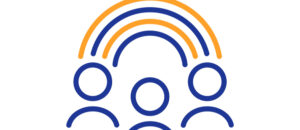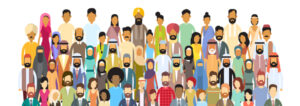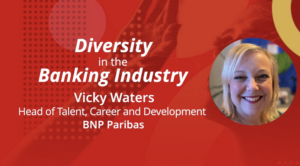HR Distinction Spotlight: Network Rail's journey to increase their employee diversity
- 4 Min Read
In this week’s HR Distinction Spotlight, we look at Network Rail’s diversity journey. The corporation set out to create a more open, diverse, and inclusive organisation.
- Author: Louron Pratt
- Date published: Dec 10, 2019
- Categories

Many organisations strive to go through a transformational journey and guarantee global success. To overcome these challenges, businesses must undertake numerous changes over many years. This can heavily impact culture, talent, and strategic focus.
Through these monumental changes, HR plays a key role in maintaining and aligning a consistent experience for their workforce in times of uncertainty. This week, we look at Network Rail’s journey. The corporation set out to create a more open, diverse, and inclusive organisation.
Network Rail set the ambitious target of increasing the number of female employees by 20% by 2020.
“As one of Britain’s biggest employers, we recognise the role we play in inspiring future generations about careers in the engineering sector. The pipeline of female and BAME talent entering the sector is low,” said Sarah Forrester, Internal Communications Executive, Network Rail.
Network rail acknowledged that the pipeline of BAME and female talent entering the sector is substandard. Women in Science and Engineering (WISE) revealed that 50,000 girls are turning away from an education in science, technology, engineering, and maths every year.
To resolve this issue, Network Rail dedicated time and resources to deliver 30,000 apprentices from female and BAME backgrounds in the next year.
“As a public-sector body, we have a responsibility to lead by example and we have set out aspirational targets for diversity representation – 20% females and 20% BAME. We’re clear that to achieve the skills needed for the future, we need to access the whole talent market and not just those who have an affinity with the rail industry,” continued Sarah.
For the rail company, attracting more females to apprenticeship schemes not only supported the target to increase the number of female employees in their organisation, but also enabled Network Rail to attract a more diverse range of talent into the areas of the business that will benefit them in the future.
Achieving this goal required ambitious and progressive changes to the way the organisation attracted and selected its apprenticeship applicants. Network rail had to ensure that it treated everyone in the same way, and gave everyone an equal platform to have equal chances of success.
Despite advances in attracting and recruiting female apprentices, Network Rail recognised the importance of supporting new cohorts and helping them find their feet to establish minority groups in the organisation. Working with employee networks aided the rail company to create a flexible support system.
Recruiting more minority groups into rail-based roles was a daunting task, due to the industry being heavily male-dominated. It required a cultural shift across the entire organisation. Continuous engagement with leadership teams and key stakeholders across the HR function and wider business was fundamental in helping the business to understand the value of making these changes happen.
To further encourage more diverse candidates to work for Network Rail, there were additional progressive changes that were implemented:
- Using gender-neutral language in advertising campaigns.
- Including more women in marketing materials.
- Featuring advertisements on a wider range of websites with less-male dominated audiences.
- Introducing ‘meet and engage’ sessions to allow potential candidates to ask current female apprentices what it was like to be a female working at Network Rail.
- Replacing telephone interviews with assessment centre coaching calls for all successful applicants.
- Changing assessments to better reflect apprenticeship environments.
- Removing ranked scoring, instead of using a pass/fail model.
- Applying a more customer-focused approach to recruitment, taking time to understand the customer journey and using this to inform continuous improvement.
- Improving on track welfare facilities by 2019, making the organisation a more attractive place to work.
The changes that Network Rail made resulted in significant differences and positive outcomes. In September 2018, the business’ female intake increased from 7% to 22%. What’s more, BAME intake rose by 14% to 30%.
“I was aware there weren’t many women in the industry, but the level of support Network Rail provided meant that I wasn’t scared. I love the fact that in this job I am free to be myself and my personality is considered a positive,” said a female apprentice at Network Rail.
“We’re continuing to seek feedback, listen and fine-tune what we’re doing as part of our commitment to continually improving diversity within Network Rail,” continued Sarah.
“We believe that a more inclusive, collaborative, engaged and motivated workforce will enhance company performance and ensure we can put passengers first. A trained workforce and supply chain, more reflective of our customers, helps us to meet the needs of our increasingly diverse local, national and international customer base.”
Network Rail set a bold target to improve its diversity significantly by 2020. In just one year, the organisation is well on its way to achieving this ambitious goal. In the years to follow, Network Rail will continue to reap the benefits of giving minority groups a voice in the science and engineering space.









